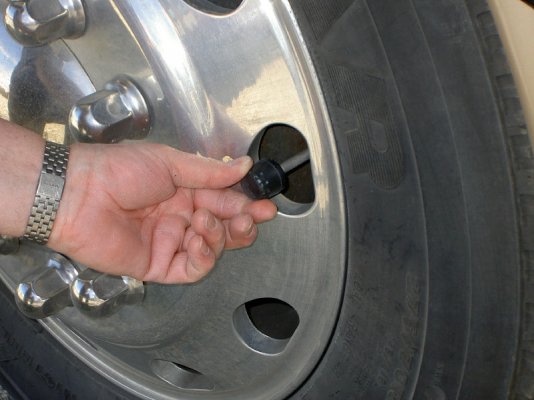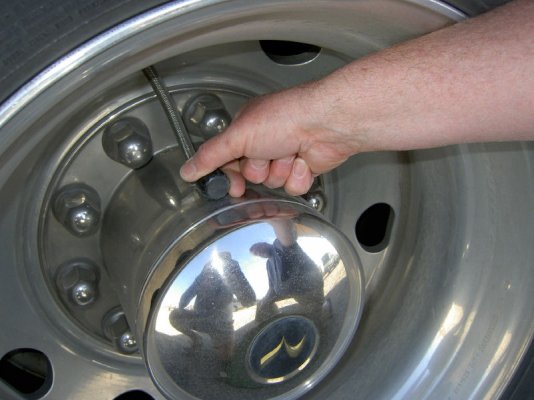Ray D
Well-known member
I have a set of procedures that I use, each time I start the motorhome, to go anywhere, including just to the RV Shop, across town. Don?t want to forget the TV antenna, the awning, or who knows what else. It is on paper, in black and white. (I?m getting too senile to pull it out of my mind.) I made it up and then modified it from stuff I have seen on this forum.
I also have a ?Personal Check List? for me. No further comment on that other than I could forget part of my bionic self.)
No further comment on that other than I could forget part of my bionic self.)
I have read, and re-read the manuals for maintenance advice. Mostly, it?s pretty good stuff, in my mind. Some of it seems a bit over the top, however. So, maybe my memory of how we used to do it is failing. Maybe I never have done it right. But, back in the good ol? days, right or wrong, we did it differently.
Do you check the transmission fluid, first cold, and then hot, every time you go somewhere? Is that a bit tedious? I?ll confess, I have been doing the cold check, fairly frequently, and having the hot check done, at the shop, a couple of times in the year I?ve had it. I also check the pad for drips and leaks, under the unit. (None, so far.) (I check for fluids on the ground, every time I go near the unit.) The previous unit got a formal check, two or three times a year. Do I need to change my habits?
Oil: If I took a long trip, say 500 miles each way, I?d check the oil at each end of the trip. We are learning the new unit, and partly to save on gas expense, not going much further than two or three hundred miles. I check it at the beginning, and/or the end of each trip. I do not check the oil if I stop for lunch. Disaster, lurking?
Approaching a mountain pass, I watch the gages, and so far, have just gone on over and down the other side. Coming up on the steep grade that descends from Wyoming, down toward Salt Lake City, I did stop at the top, before descending, and checked everything. Back in my truck driving days, I stopped at the top of each long grade and did a quick check on everything, let the engine cool a bit, and clear the cobwebs out of my head.
I haven?t been down ?The Grape Vine? in California, in more than 35 years. It?s probably been straightened out, by now. However, I did have a clutch shred itself there, once, about two thirds of the way down. I had a light load on a 2 ? ton Ford. I pulled into the fast lane, and noticed a CHIP unit with lights flashing, behind me. I didn?t know how things were going to work out, but got a chuckle out of the idea of a ticket. Just hoped I would be in good enough condition to sign it!
I was pretty surprised, at how well the truck handled at those speeds. Approaching 100mph, it was smooth as glass. The last turn was a wide one, right on the edge of controllable. By the way, the cop pulled in front of me, and led the way. At the end, all he did was stop and ask if I was alright. Told him I?d be fine, in a little bit and asked him to call my wife to arrange a rescue for the truck.
Anybody ever watch the Hollywood scene where a passenger car pulls in front of the runaway school bus, gently matches bumpers and brings it to a safe stop. Heh, heh, heh! Wonder if anyone ever tried that. Ever succeeded, even on a gentle hill?
OK, tire pressure. How many get down on their knees and use the gage, and how often? If you have PressurePro, do you double-check it with a gage, and how often?
I used to check the tires on my trucks, several times a day. But, I rarely used a gage. I kept my old habit, right up to recently. Hate to think I have to get down there with a pressure gage, several times a day! I have it re-aligned, twice a year - and have them check the tires with a gage anytime it is in for any kind of service. Other than that, I have used the old, (perhaps too old,) truck driver?s method. Is that out of style, now?
In case there is more than one old truck driver?s method, I use - used - the iron bar method. Three foot crow-bar is fine. One whacks the tire smartly, across the tread. You get a thump and a ring. The higher the pitch of the note, the higher the pressure in the tire. We looked for all tires to give the same ringing tone. You get a soft ?whump? and no ring, out of a tire that has little or no pressure Once in a while, we used the gage.
Do I need to upgrade my proceedures?
Ray D.
I also have a ?Personal Check List? for me.
I have read, and re-read the manuals for maintenance advice. Mostly, it?s pretty good stuff, in my mind. Some of it seems a bit over the top, however. So, maybe my memory of how we used to do it is failing. Maybe I never have done it right. But, back in the good ol? days, right or wrong, we did it differently.
Do you check the transmission fluid, first cold, and then hot, every time you go somewhere? Is that a bit tedious? I?ll confess, I have been doing the cold check, fairly frequently, and having the hot check done, at the shop, a couple of times in the year I?ve had it. I also check the pad for drips and leaks, under the unit. (None, so far.) (I check for fluids on the ground, every time I go near the unit.) The previous unit got a formal check, two or three times a year. Do I need to change my habits?
Oil: If I took a long trip, say 500 miles each way, I?d check the oil at each end of the trip. We are learning the new unit, and partly to save on gas expense, not going much further than two or three hundred miles. I check it at the beginning, and/or the end of each trip. I do not check the oil if I stop for lunch. Disaster, lurking?
Approaching a mountain pass, I watch the gages, and so far, have just gone on over and down the other side. Coming up on the steep grade that descends from Wyoming, down toward Salt Lake City, I did stop at the top, before descending, and checked everything. Back in my truck driving days, I stopped at the top of each long grade and did a quick check on everything, let the engine cool a bit, and clear the cobwebs out of my head.
I haven?t been down ?The Grape Vine? in California, in more than 35 years. It?s probably been straightened out, by now. However, I did have a clutch shred itself there, once, about two thirds of the way down. I had a light load on a 2 ? ton Ford. I pulled into the fast lane, and noticed a CHIP unit with lights flashing, behind me. I didn?t know how things were going to work out, but got a chuckle out of the idea of a ticket. Just hoped I would be in good enough condition to sign it!
I was pretty surprised, at how well the truck handled at those speeds. Approaching 100mph, it was smooth as glass. The last turn was a wide one, right on the edge of controllable. By the way, the cop pulled in front of me, and led the way. At the end, all he did was stop and ask if I was alright. Told him I?d be fine, in a little bit and asked him to call my wife to arrange a rescue for the truck.
Anybody ever watch the Hollywood scene where a passenger car pulls in front of the runaway school bus, gently matches bumpers and brings it to a safe stop. Heh, heh, heh! Wonder if anyone ever tried that. Ever succeeded, even on a gentle hill?
OK, tire pressure. How many get down on their knees and use the gage, and how often? If you have PressurePro, do you double-check it with a gage, and how often?
I used to check the tires on my trucks, several times a day. But, I rarely used a gage. I kept my old habit, right up to recently. Hate to think I have to get down there with a pressure gage, several times a day! I have it re-aligned, twice a year - and have them check the tires with a gage anytime it is in for any kind of service. Other than that, I have used the old, (perhaps too old,) truck driver?s method. Is that out of style, now?
In case there is more than one old truck driver?s method, I use - used - the iron bar method. Three foot crow-bar is fine. One whacks the tire smartly, across the tread. You get a thump and a ring. The higher the pitch of the note, the higher the pressure in the tire. We looked for all tires to give the same ringing tone. You get a soft ?whump? and no ring, out of a tire that has little or no pressure Once in a while, we used the gage.
Do I need to upgrade my proceedures?
Ray D.


